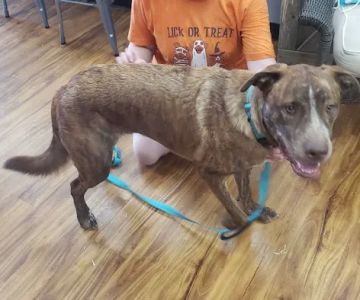- Why Dogs Need Boundaries
- Steps to Train Your Dog to Stay in a Particular Area
- Using Positive Reinforcement in Dog Training
- Common Challenges in Teaching Boundaries
- When to Seek Professional Help
Why Dogs Need Boundaries
Training your dog to stay in a particular area is an essential part of responsible pet ownership. Dogs are social animals, but they also need structure and clear boundaries to feel secure and behave appropriately. Without proper training, a dog may develop unwanted behaviors such as entering rooms they’re not allowed in, knocking over furniture, or even damaging your home. Setting up clear boundaries helps them understand what is acceptable and what isn’t.
By teaching your dog to stay in a designated area, you also ensure their safety. For example, if you need to keep them out of the kitchen while cooking or prevent them from running out the door when guests arrive, training your dog to stay in a specific spot can prevent accidents and misbehavior.
Steps to Train Your Dog to Stay in a Particular Area
Training your dog to stay in a particular area can be a simple process when you follow these steps consistently. Here’s a guide to help you get started:
- 1. Choose the Right Area: The first step is to select the area where you want your dog to stay. This could be a specific room, a crate, or a designated corner of your living space. Make sure the area is safe and comfortable for your dog.
- 2. Introduce the Area Gradually: Begin by bringing your dog to the chosen area with a leash. Let them explore and get comfortable with the space. If you're using a crate, start by making it a positive experience with toys or treats inside.
- 3. Use a Command: Once your dog is comfortable in the area, introduce a consistent verbal cue such as "stay" or "place." Say the command as you guide them into the area and reward them with a treat or praise when they remain there.
- 4. Short Sessions with Positive Reinforcement: Keep the initial training sessions short and rewarding. You can increase the time your dog stays in the area as they become more comfortable. Reward them immediately when they follow your command and stay in the spot.
- 5. Gradual Distractions: As your dog learns the basic concept, gradually introduce distractions such as movement, noises, or even other people in the room. If your dog stays in the area despite these distractions, reward them with praise and treats.
Remember that training should always be a positive experience. Avoid any negative reinforcement or punishment, as this can cause confusion and stress for your dog.
Using Positive Reinforcement in Dog Training
Positive reinforcement is one of the most effective techniques in dog training, especially when teaching your dog to stay in a particular area. This method involves rewarding your dog for good behavior to encourage them to repeat it. The rewards can be anything from treats, toys, to verbal praise—anything that motivates your dog.
For example, if you ask your dog to stay in a designated area and they do so, immediately reward them with a treat or praise. This helps your dog associate staying in the area with positive outcomes. Over time, your dog will understand that staying in the designated spot brings rewards, reinforcing the behavior.
Positive reinforcement not only helps with teaching boundaries but also strengthens the bond between you and your dog. It encourages your dog to look to you for guidance and builds trust in your commands.
Common Challenges in Teaching Boundaries
Training your dog to stay in a particular area is generally straightforward, but some challenges may arise along the way. Here are a few common hurdles and tips on how to overcome them:
- Distractions: One of the most common challenges is distractions. If your dog is easily distracted by sounds, movement, or other pets, it can be tough to keep them focused. Start by training in a quiet environment and gradually add distractions as they improve.
- Reinforcement Consistency: Consistency is key in dog training. If you occasionally allow your dog to break the rules, it may confuse them. Always ensure you’re rewarding the correct behavior and reinforcing the same boundaries.
- Patience: Some dogs may take longer to catch on to the concept of staying in a particular area. It's important to be patient and allow them time to learn. If they make a mistake, redirect them calmly without punishment.
When to Seek Professional Help
If you encounter difficulties or your dog struggles to grasp the concept of staying in a particular area, it may be time to consult with a professional dog trainer. A trainer can provide personalized strategies and help address any behavioral issues your dog might have.
At Hidden Brook Veterinary, we understand the importance of training your dog and can provide advice on how to set clear boundaries. If you're looking for additional resources or need guidance, our team is here to support you every step of the way.












